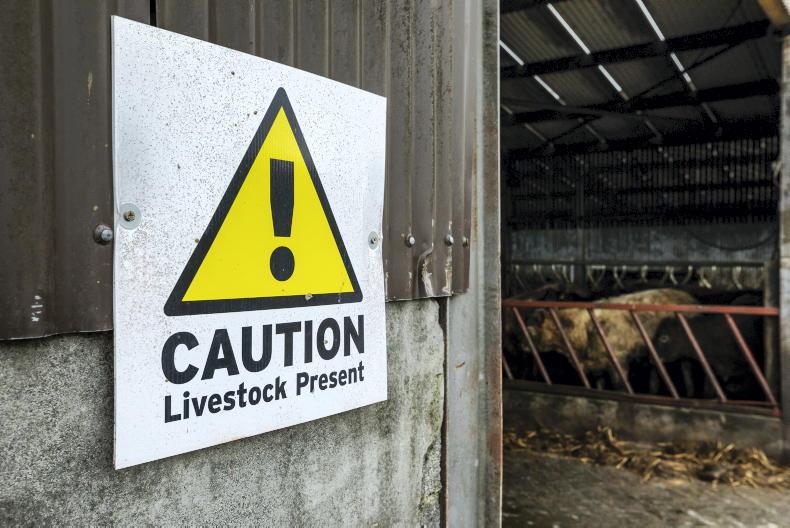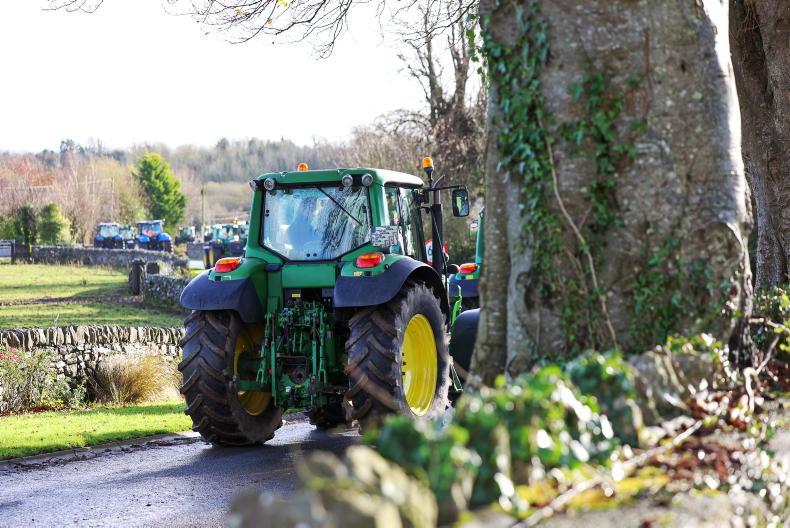“Looks like you brought the good weather with you!” This is something I usually hear after returning to Ireland from a trip to my other home – the east coast of Canada.
I usually take my kids in the summer and try to stay for at least three weeks so they can soak up some of their Nova Scotian culture, spend time with my family and gets lots of swimming practice in.
On the other side of things, my parents like to visit our farm in Tipperary earlier on, in May, when it is still quite chilly at home and much more pleasant in Ireland.
I don’t usually say “you brought the good weather with you” when they come to visit, because the truth is, there could still be the remnants of the last winter snow on the ground at that time. Indeed, just a few days before they arrived this year (on 11 May), they had their final snow of the season.
But that soon changed. Last week, I heard my father telling my mother that a family acquaintance had lost their home in an out-of-control forest fire. Their house, and many others, burned to the ground just two hours after the area was evacuated. Last autumn, a huge hurricane (Storm Fiona) slammed into Nova Scotia, felling many trees – effectively turning them into tinder. It is believed the forest fire was started by an overheated ATV. All it took was a brief flame.
Now, two separate fires have been burning for the past week, one on either side of the provincial capital. One is currently under control, but over 150 homes have been lost. Thankfully, everyone has been able to evacuate in time. However, affected families are now homeless and the process of getting back to any kind of normality will likely take years.
Risk
In Ireland (at the time of writing), we are currently in an orange level risk for forest fires. This is just a step down from red, which is the highest and most extreme risk. These warnings come from the Department of Agriculture, Food and the Marine in light of our recent dry weather and expected continued weather conditions. Gorse, grasses and forests are all risk areas, and as fires can be started accidentally, we are all tasked with taking care while enjoying the nice weather. Avoid camp fires and barbecues in high-risk areas and take care not to do any type of outside burning, as the tiniest spark could easily become an out-of-control situation.
For farmers involved in forestry, the Teagasc website has some good tips on how to prepare for forest fire situations. Aside from the most important thing – insuring any forestry crop you have – I think the other most important piece of advice is around communication. Talk to those around you and share your concerns. Make sure neighbours and members of the wider community understand the risks involved in having fires at this time of year. In this case, what might start as a farmer’s problem can very quickly become the whole community’s.
In the final instalment of her wonderful memoir series, Maureen Boyle writes about how we can unlock key memories through our senses – largely, through our sense of smell. She discusses how, for her, the smell of lilacs in May is particularly poignant; reminding her of both good and sad times in her life. In light of these recent events, I only hope that the children who have lost their homes and possessions in the Canadian wildfires (and have experienced the urgent fear which comes with any emergency evacuation) will not recall the smell of burning forests when they someday sit down to write their memoirs.
Read more
Your kids are always watching you... and imitating you
What do you buy the man who has everything? Food!
“Looks like you brought the good weather with you!” This is something I usually hear after returning to Ireland from a trip to my other home – the east coast of Canada.
I usually take my kids in the summer and try to stay for at least three weeks so they can soak up some of their Nova Scotian culture, spend time with my family and gets lots of swimming practice in.
On the other side of things, my parents like to visit our farm in Tipperary earlier on, in May, when it is still quite chilly at home and much more pleasant in Ireland.
I don’t usually say “you brought the good weather with you” when they come to visit, because the truth is, there could still be the remnants of the last winter snow on the ground at that time. Indeed, just a few days before they arrived this year (on 11 May), they had their final snow of the season.
But that soon changed. Last week, I heard my father telling my mother that a family acquaintance had lost their home in an out-of-control forest fire. Their house, and many others, burned to the ground just two hours after the area was evacuated. Last autumn, a huge hurricane (Storm Fiona) slammed into Nova Scotia, felling many trees – effectively turning them into tinder. It is believed the forest fire was started by an overheated ATV. All it took was a brief flame.
Now, two separate fires have been burning for the past week, one on either side of the provincial capital. One is currently under control, but over 150 homes have been lost. Thankfully, everyone has been able to evacuate in time. However, affected families are now homeless and the process of getting back to any kind of normality will likely take years.
Risk
In Ireland (at the time of writing), we are currently in an orange level risk for forest fires. This is just a step down from red, which is the highest and most extreme risk. These warnings come from the Department of Agriculture, Food and the Marine in light of our recent dry weather and expected continued weather conditions. Gorse, grasses and forests are all risk areas, and as fires can be started accidentally, we are all tasked with taking care while enjoying the nice weather. Avoid camp fires and barbecues in high-risk areas and take care not to do any type of outside burning, as the tiniest spark could easily become an out-of-control situation.
For farmers involved in forestry, the Teagasc website has some good tips on how to prepare for forest fire situations. Aside from the most important thing – insuring any forestry crop you have – I think the other most important piece of advice is around communication. Talk to those around you and share your concerns. Make sure neighbours and members of the wider community understand the risks involved in having fires at this time of year. In this case, what might start as a farmer’s problem can very quickly become the whole community’s.
In the final instalment of her wonderful memoir series, Maureen Boyle writes about how we can unlock key memories through our senses – largely, through our sense of smell. She discusses how, for her, the smell of lilacs in May is particularly poignant; reminding her of both good and sad times in her life. In light of these recent events, I only hope that the children who have lost their homes and possessions in the Canadian wildfires (and have experienced the urgent fear which comes with any emergency evacuation) will not recall the smell of burning forests when they someday sit down to write their memoirs.
Read more
Your kids are always watching you... and imitating you
What do you buy the man who has everything? Food!










SHARING OPTIONS